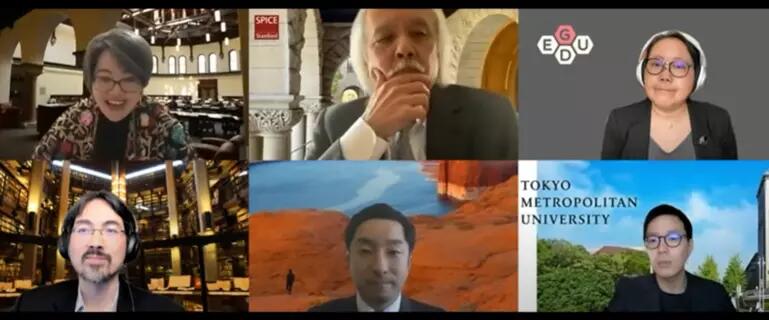
Event Report: Remapping Global Education in Japan
On February 28th from 7:00pm-8:30pm (EST)/March 1st 9:00am-10:30am (JST) an exciting panel of experts came together in an event aimed at examining changing patterns of innovation in education, and what role Japan plays in this puzzle. Panelists reflected on both historical examples of global education reform and the future of inquiry-based learning for youth in Japan. This event was hosted by Professor Rie Kijima, the Director for the Initiative for Education Policy at the Centre for the Study of Global Japan. The Centre would also like to acknowledge the unwavering support demonstrated by the Consulate General of Japan in Toronto that graciously co-sponsored this event.
Professor Rie Kijima started the event by outlining main topics of the panel discussion, including instituting global education reforms in Japan, globalizing education in tertiary and secondary education, and localization of global education efforts. The panel was also asked to discuss the challenges and promises of education reform and the future of inquiry-based learning for youths in Japan.
The first panelist, Dr. Gary Mukai, Director of Stanford Program on International and Cross-Cultural Education at Stanford University, started his presentation discussing the development of curriculum for Japanese students at the high school education level offered by the Stanford e-Japan program, placing significance on the need of cross-cultural programs to inspire learning that transcends borders. Mukai then talked about the important outcomes this program has experienced over the past few years including topics surrounding regional representation of students, English language learning abilities, and the recognition of high-achieving learners.
The following panelist, Dr. Keiko Okawa, Director of the Research Institute for Digital Media and Content and Professor at Keio University, grounded her presentation highlighting the strengths global education curriculums can offer, including facilitating transformative learning experiences and designing innovative, sustainable programs that turn students into global citizens. Okawa then examined the Global Workshop project, a program she led that allows female Japanese high school students to engage with their fellow peers in educational settings in order to establish the skills and confidence needed to tackle global issues later on in their lives. Okawa praised the program for contributing to a sense of active citizenship for the students, and to inspire educational reforms at the secondary school level.
The group then had the privilege to hear from Dr. Kazuaki Iwabuchi from Tokyo Metropolitan University. Iwabuchi showcased Japan’s internationalization reform in the education sphere as a prime case study to discern the possibilities and challenges faced when changing curriculums. Japan’s 2011 goal of establishing 200 International Baccalaureate (IB) schools was put forth with the intention of producing human resources that have the ability to compete against emerging economies. To date 72 IB schools have been established in Japan, with Iwabuchi explaining the lengthy process as a result of ideational differences of the country’s many stakeholders involved in the reform, including politicians, private councils, and powerful executives in the education world. Iwabuchi then explained how this reform has impacted both public and private education for students in Japan, highlighting the need for less institutional barriers in order to solve issues of equity and varying program specialization opportunities the country faces.
The final speaker, Mr. Kenshiro Hama, Vice Mayor of Kyotangoshi located in Kyoto Prefecture, Japan, started his presentation with an overview of the city he represents, and the newly established GIGA (Global and Innovation Gateway for All) program that primary and secondary students in this region have access to. The GIGA program's foundational goal was to optimize the potential of Japanese students by providing collaborative learning environments, bolstered by the use of technology and more ‘globalized’ curriculums. Hama then compared the state of information and communication technology available in Japan to other leading countries around the globe, like Singapore and Germany. Hama stated that Japan has the opportunity to learn from where its international partners are succeeding in the space, and how the future of education is tightly correlated with internet usage and technology in order to foster individual learning capacity and educational goals.
Following the panel discussion, there was a lively question and answer period with viewers from around the globe. Questions the panelists answered involved ideas surrounding recent innovations in Japanese education systems, trends surrounding the uptake of digital technology in classrooms, and the barriers that exist preventing educational reform from occurring more quickly.
We would like to thank the panel for their brilliant analysis, as well as the virtual audience that was in attendance for an engaged Q&A session.

